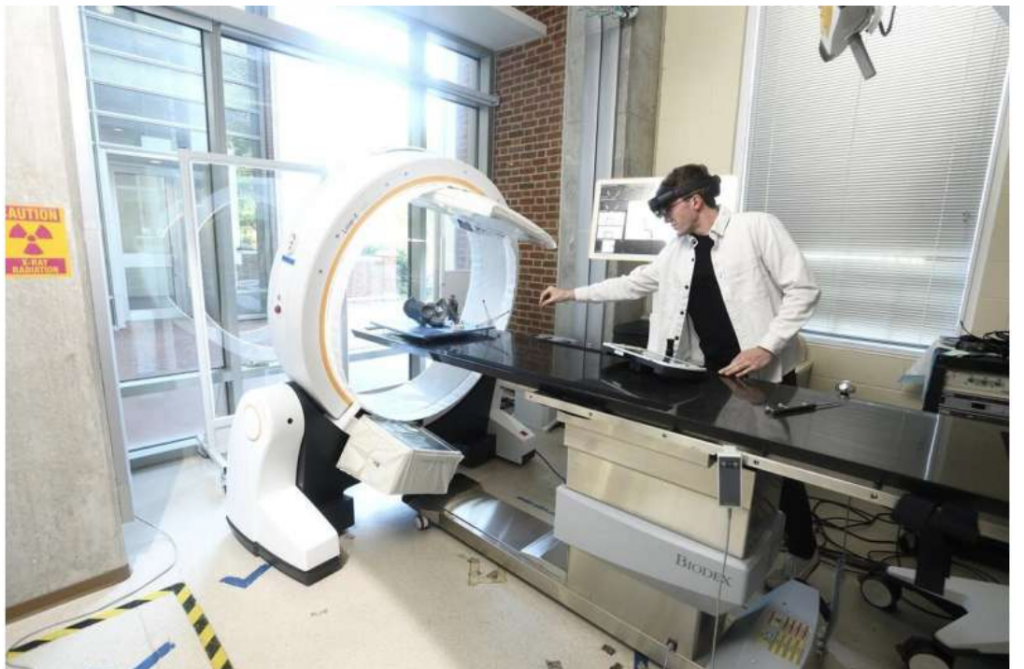
A medical student trains for surgery on an artificially generated body. (Source: Will Kirk/Johns Hopkins University)
Simulating Surgery with Algorithms Will Train Doctors Faster, Create Better Skills
Researchers in the Whiting School of Engineering’s Laboratory for Computational Sensing and Robotics have created software to realistically simulate the data necessary for developing AI algorithms that perform important tasks in surgery, such as X-ray image analysis.
The same researchers harnessed the power of sophisticated computer simulations similar to those found in popular simulation video games like The Sims or Minecraft.
The research, published March 20 in Nature Machine Intelligence, found that algorithms built with the new SyntheX could perform as well as or even better than algorithms built from real data in multiple applications, including giving a robot the ability to detect surgical instruments during procedures.
“We show that generating realistic synthetic data is a viable resource for developing artificial intelligence models and much more feasible than collecting real clinical data, which can be incredibly hard to come by or, in some cases, simply doesn’t exist yet,” said Mathias Unberath, an assistant professor of computer science and senior author of the paper.
For years training a new surgeon required cadavers. While trying to train x-ray surgeons was impossible as there were no algorithms available to simulate that type of surgery.
A piece from medicalexpress.com reveals the exciting upgrade to surgical training.
First, they took a series of real X-rays and CT scans, acquired from cadavers using surgical C-arm X-ray systems. Next, they generated “synthetic” X-ray images that precisely recreated the real-world experiment. Both the real and simulated datasets were then used to develop and train new AI algorithms capable of making clinically meaningful predictions on real X-ray images: hip imaging analysis, robotic surgical instrument detection, and COVID diagnosis. When all was said and done, the team found that the algorithm trained on the simulated data performed as well as the algorithm trained on real data.
The results speak for themselves. The algorithm worked as well or better than the previous mode of training.
“Traditionally, models trained on synthetic data don’t work well on real clinical data, but that is not the case with SyntheX,” said Unberath. “We demonstrated that models trained using only simulated X-rays could be applied to real X-rays from the clinics, without any loss of performance.”
Of course, this breakthrough will be improved upon for other medical training programs and it will be shared across the medical fields from x-ray to dentistry and more.
The team plans to make SyntheX an open-source tool for data simulation, so other researchers can get the datasets they need.
“If you need real data from cadavers or clinics, only very few universities worldwide could do this research. Our system allows researchers to develop meaningful algorithms using only simulation and simulated data, which means many more people can meaningfully contribute and innovate in this space,” said Unberath.
AI is improving the healthcare of the population by leaps and bounds daily. What remains to be seen is what is next in this miraculous journey of combining AI with healthcare.
read more at medicalxpress.com







Leave A Comment